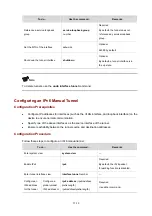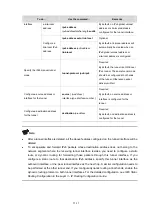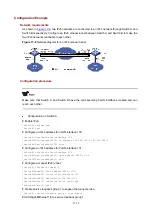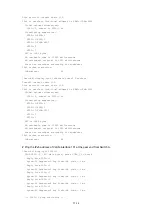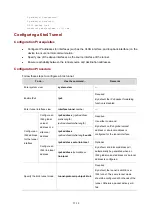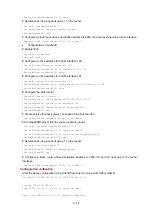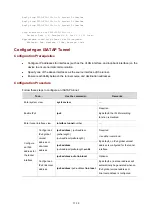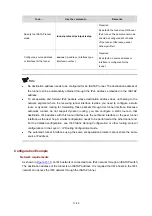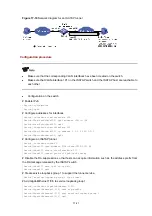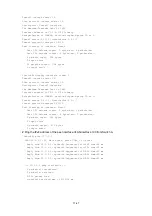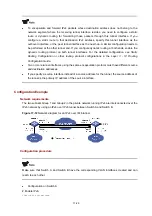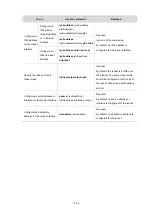
17-20
To do…
Use the command…
Remarks
Specify the ISATAP tunnel
mode
tunnel-protocol ipv6-ipv4 isatap
Required
By default, the tunnel is a GRE over
IPv4 tunnel. The same tunnel mode
should be configured at both ends
of the tunnel. Otherwise, packet
delivery will fail.
Configure a source address
or interface for the tunnel
source
{
ip-address
|
interface-type
interface-number
}
Required
By default, no source address or
interface is configured for the
tunnel.
z
No destination address needs to be configured for an ISATAP tunnel. The destination address of
the tunnel can be automatically obtained through the IPv4 address embedded in the ISATAP
address.
z
To encapsulate and forward IPv6 packets whose destination address does not belong to the
network segment where the receiving tunnel interface resides, you need to configure a static
route or dynamic routing for forwarding those packets through this tunnel interface. Because
automatic tunnels do not support dynamic routing, you can configure a static route to that
destination IPv6 address with this tunnel interface as the outbound interface or the peer tunnel
interface as the next hop. A similar configuration needs to be performed at the other tunnel end.
For the detailed configuration,
see IPv6
Static Routing Configuration
or
other routing protocol
configurations in the Layer 3 - IP Routing Configuration Guide.
z
The automatic tunnel interfaces using the same encapsulation protocol cannot share the same
source IP address.
Configuration Example
Network requirements
As shown in
, an IPv6 network is connected to an IPv4 network through an ISATAP switch.
The destination address of the tunnel is an ISATAP address. It is required that IPv6 hosts in the IPv4
network can access the IPv6 network through the ISATAP tunnel.





